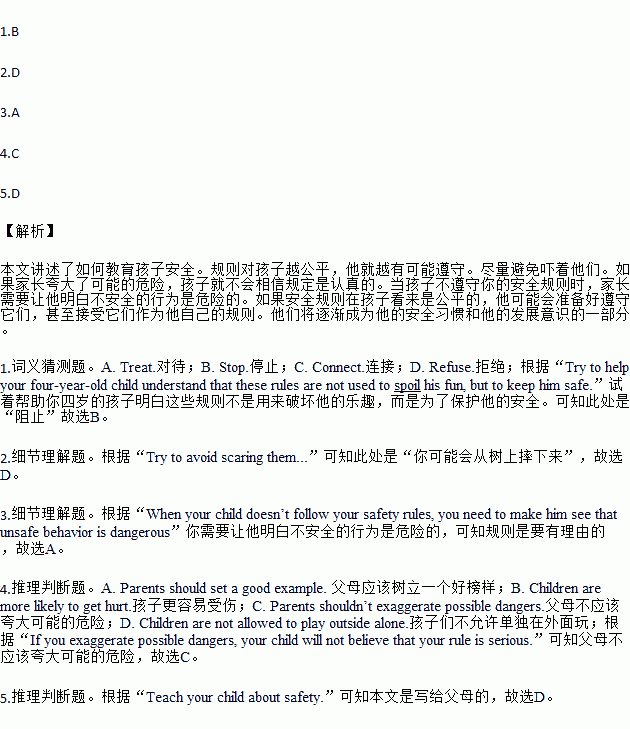题目内容
Teach your child about safety.
When you teach safety rules to your little child, it will help if you provide clear reasons for the rules. Try to help your four-year-old child understand that these rules are not used to spoil his fun, but to keep him safe. The fairer your rules seem to your child, the more likely he is to follow them.
Try to avoid scaring them. The reason why you don’t want your child to climb up onto the top of the tree is not “You’ll fall off the tree and break your neck and die”. but “If you do fall off the tree, you’ll get hurt.” If you exaggerate possible dangers, your child will not believe that your rule is serious.
When your child doesn’t follow your safety rules, you need to make him see that unsafe behavior is dangerous. If your child runs out into the street, you should immediately pull him back, repeat your rules, explain your rules and warm him not to do it again.
If your child then repeats the unsafe behavior, you should let him know the connection between his action and the results. In the example above, you might make him come back right away. “I told you that you can’t run in the street. It’s not safe. If you can’t play outside safely, you can’t play outside.”
If your safety rules seem fair to your child, he will probably be ready to follow them and even accept them as his own rules. And they will gradually become his safety habits and part of his developing consciousness.
1.What does the underlined word “spoil” mean?
A.Treat. B.Stop. C.Connect. D.Refuse.
2.What should we say to a child if he climbs up onto the top of the tree?
A.You may die. B.You can’t play outside.
C.You may break your neck. D.You may fall off the tree and get hurt.
3.According to the passage, what should safety rules be?
A.Reasonable B.Safe C.Smart D.Helpful
4.Which of the following is TRUE?
A.Parents should set a good example.
B.Children are more likely to get hurt.
C.Parents shouldn’t exaggerate possible dangers.
D.Children are not allowed to play outside alone.
5.Who is this passage written for?
A.Writers. B.Children. C.Teachers. D.Parents.

